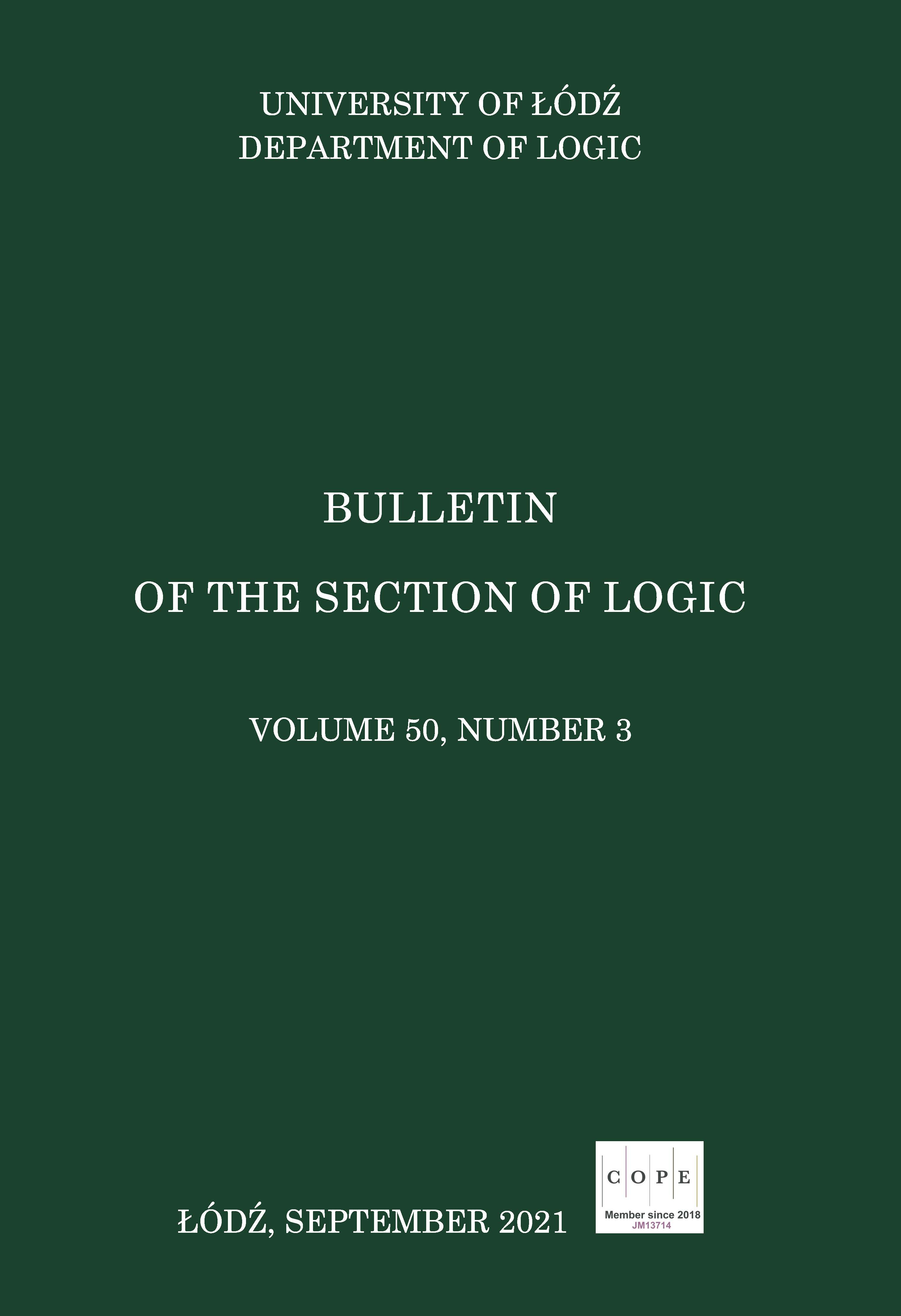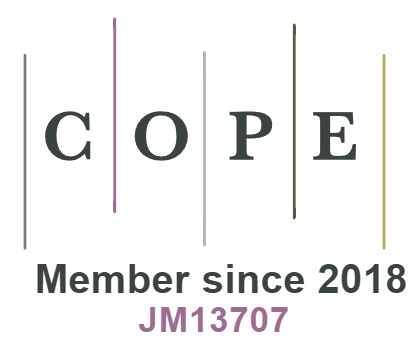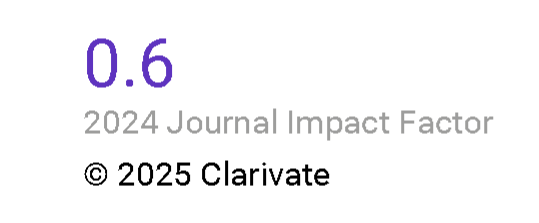Neighbourhood Semantics for Graded Modal Logic
DOI:
https://doi.org/10.18778/0138-0680.2021.12Keywords:
Graded modal logic, neighbourhood frames, bisimulationAbstract
We introduce a class of neighbourhood frames for graded modal logic embedding Kripke frames into neighbourhood frames. This class of neighbourhood frames is shown to be first-order definable but not modally definable. We also obtain a new definition of graded bisimulation with respect to Kripke frames by modifying the definition of monotonic bisimulation.
References
[1] L. Aceto, A. Ingolfsdottir, J. Sack, Resource bisimilarity and graded bisimilarity coincide, Information Processing Letters, vol. 111(2) (2010), pp. 68–76, DOI: https://doi.org/10.1016/j.ipl.2010.10.019
Google Scholar
DOI: https://doi.org/10.1016/j.ipl.2010.10.019
[2] C. Cerrato, General canonical models for graded normal logics (Graded modalities IV), Studia Logica, vol. 49(2) (1990), pp. 241–252, DOI: https://doi.org/10.1007/BF00935601
Google Scholar
DOI: https://doi.org/10.1007/BF00935601
[3] C. Cerrato, Decidability by filtrations for graded normal logics (graded modalities V), Studia Logica, vol. 53(1) (1994), pp. 61–74, DOI: https://doi.org/10.1007/BF01053022
Google Scholar
DOI: https://doi.org/10.1007/BF01053022
[4] B. F. Chellas, Modal logic: an introduction, Cambridge University Press (1980).
Google Scholar
DOI: https://doi.org/10.1017/CBO9780511621192
[5] J. Chen, G. Greco, A. Palmigiano, A. Tzimoulis, Non normal logics: semantic analysis and proof theory, [in:] Proc. of WoLLIC, vol. 11541 of LNCS, Springer (2019), pp. 99–118, DOI: https://doi.org/10.1007/978-3-662-59533-6_7
Google Scholar
DOI: https://doi.org/10.1007/978-3-662-59533-6_7
[6] F. De Caro, Graded modalities, II (canonical models), Studia Logica, vol. 47(1) (1988), pp. 1–10, DOI: https://doi.org/10.1007/BF00374047
Google Scholar
DOI: https://doi.org/10.1007/BF00374047
[7] M. de Rijke, A note on graded modal logic, Studia Logica, vol. 64(2) (2000), pp. 271–283, DOI: https://doi.org/10.1023/A:1005245900406
Google Scholar
DOI: https://doi.org/10.1023/A:1005245900406
[8] K. Fine, In so many possible worlds., Notre Dame Journal of formal logic, vol. 13(4) (1972), pp. 516–520, DOI: https://doi.org/10.1305/ndjfl/1093890715
Google Scholar
DOI: https://doi.org/10.1305/ndjfl/1093890715
[9] L. F. Goble, Grades of modality, Logique et Analyse, vol. 13(51) (1970), pp. 323–334.
Google Scholar
[10] H. H. Hansen, Monotonic modal logics, ILLC Report Nr: PP-2003-24, University of Amsterdam (2003).
Google Scholar
[11] D. Kaplan, S5 with multiple possibility, Journal of Symbolic Logic, vol. 35(2) (1970), p. 355, DOI: https://doi.org/10.2307/2270571
Google Scholar
DOI: https://doi.org/10.2307/2270571
[12] M. Ma, K. Sano, How to update neighbourhood models, Journal of Logic and Computation, vol. 28(8) (2018), pp. 1781–1804, DOI: https://doi.org/10.1093/logcom/exv026
Google Scholar
DOI: https://doi.org/10.1093/logcom/exv026
[13] M. Ma, H. van Ditmarsch, Dynamic Graded Epistemic Logic, The Review of Symbolic Logic, vol. 12(4) (2019), pp. 663–684, DOI: https://doi.org/10.1017/S1755020319000285
Google Scholar
DOI: https://doi.org/10.1017/S1755020319000285
[14] E. Pacuit, Neighborhood semantics for modal logic, Short Textbooks in Logic, Springer (2017), DOI: https://doi.org/10.1007/978-3-319-67149-9
Google Scholar
DOI: https://doi.org/10.1007/978-3-319-67149-9
[15] W. van der Hoek, On the semantics of graded modalities, Journal of Applied Non-Classical Logics, vol. 2(1) (1992), pp. 81–123.
Google Scholar
[16] W. van der Hoek, J.-J. C. Meyer, Graded modalities in epistemic logic, [in:] International Symposium on Logical Foundations of Computer Science, Springer (1992), pp. 503–514, DOI: https://doi.org/10.1007/BFb0023902
Google Scholar
DOI: https://doi.org/10.1007/BFb0023902
Downloads
Published
How to Cite
Issue
Section
License

This work is licensed under a Creative Commons Attribution-NonCommercial-NoDerivatives 4.0 International License.















